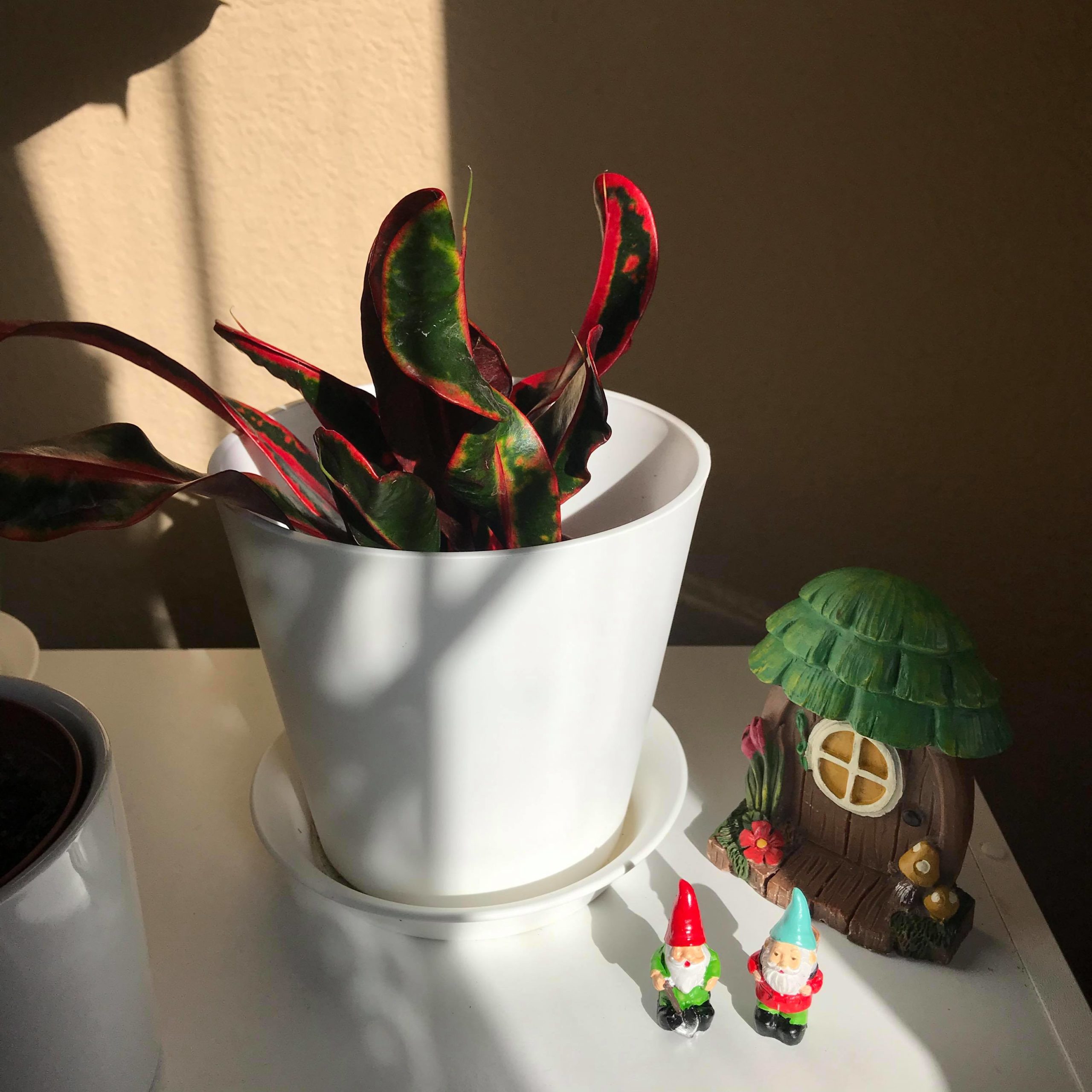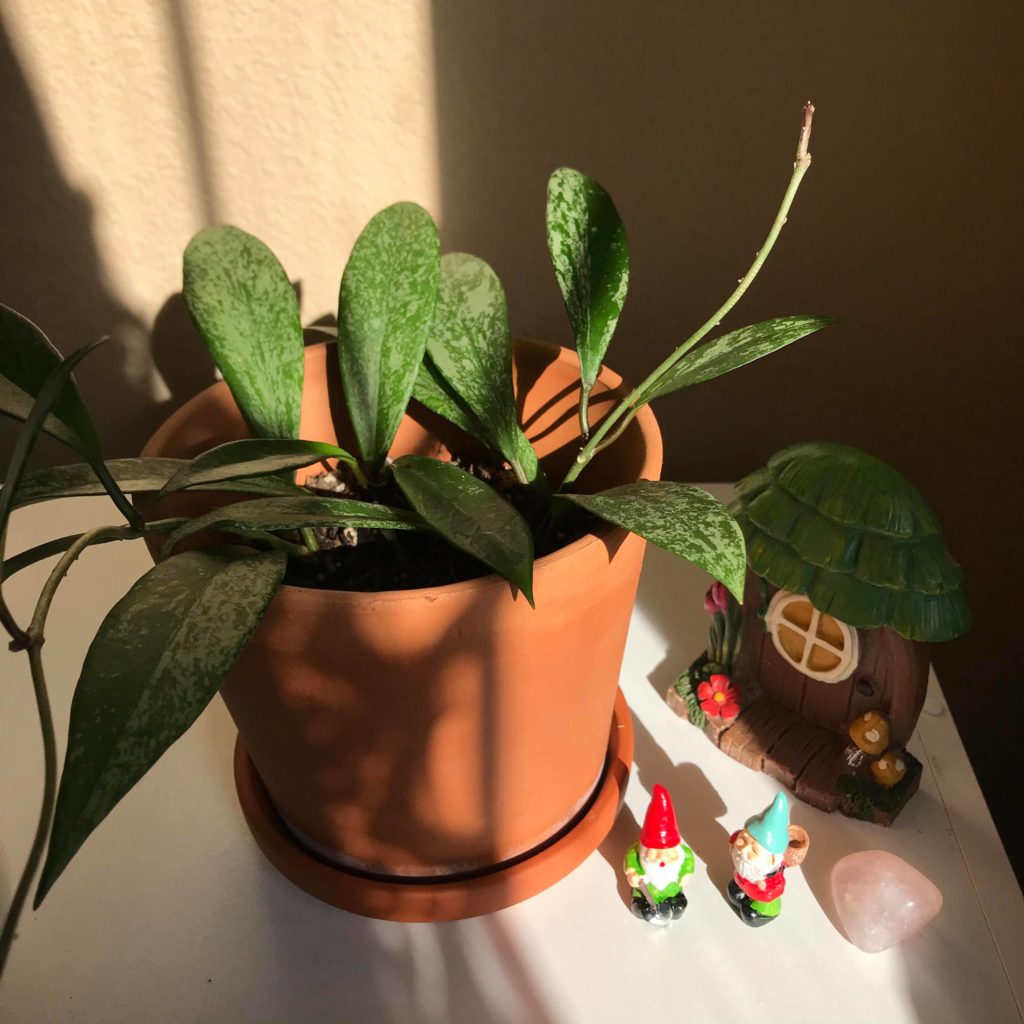Should you use terra cotta or plastic pots for your plants? This was definitely one of my main questions when I started buying proper pots for my plant. The answer is, of course, it depends! In general, a plant that prefers to stay on the dry side will appreciate a clay pot that absorbs excess water. On the flip side, a plant that likes extra moisture will enjoy staying in a plastic or glazed planter where water doesn’t get absorbed as easily. In either case, it’s critical to keep your plant in a container with a drainage hole. Too much water will inevitably give any plant root rot!
About ten of my plants live in terracotta pots at the moment, including many of my hoyas and snake plants. Plastic or glazed cachepots tend to hold water longer, so if you have a heavy hand when watering, clay may be more forgiving, especially if you’re dealing with plants such as succulents. Terracotta pots also tend to be less expensive. They do develop a gritty patina of sorts over time (in addition to potentially chipping), which may or may not be to your taste! I prefer terracotta for my smaller plants because it can get quite heavy — my monstera lives in a 10-inch clay pot, and it’s hard to move around for watering!
That being said, most of my plants live in their plastic nursery pots covered by glazed/plastic cachepots. While it might be tempting to switch pots the very moment I get my plants, I find that it needs some time to adjust to the conditions of my home. Plucking it from its nursery pot may actually introduce it to shock. Even if I buy a plant that enjoys drying out, I usually leave it in its nursery pot for a few months. Over time, I save my bigger nursery pots for when I upgrade my baby plants into larger homes.
You’ll also find plastic planters that already come with drainage holes. A few months ago, Potey sent me some plastic planters that came with both drainage holes and saucers. This build was actually quite nice because the plastic ones I’ve seen tend to be self-watering planters with hard-to-remove bottoms! It’s perfect for thirsty plants such as calatheas, ferns, and peace lilies. It’s also great for hanging plants that live in macrame since plastic is less heavy and less likely to break.
Most plant parents I know own a combination of plastic and terracotta pots. Neither medium will guarantee that your plant will survive or die, but knowing the advantages and disadvantages of each will keep you informed about getting the right home for your plant and watering habits!

